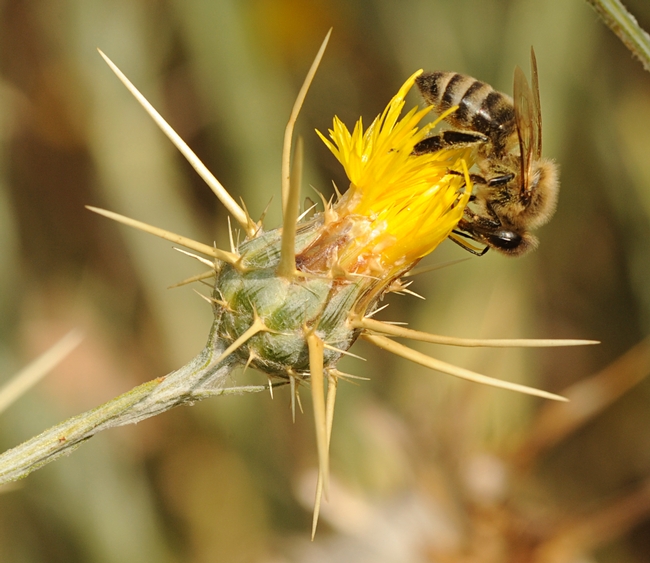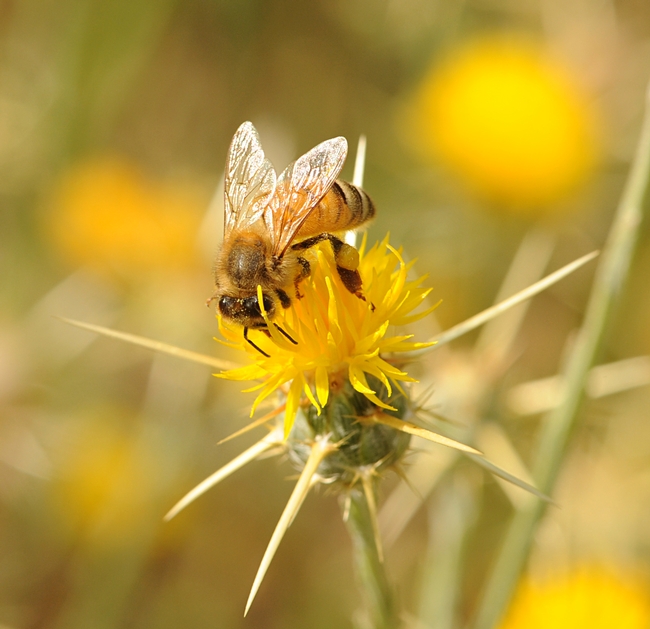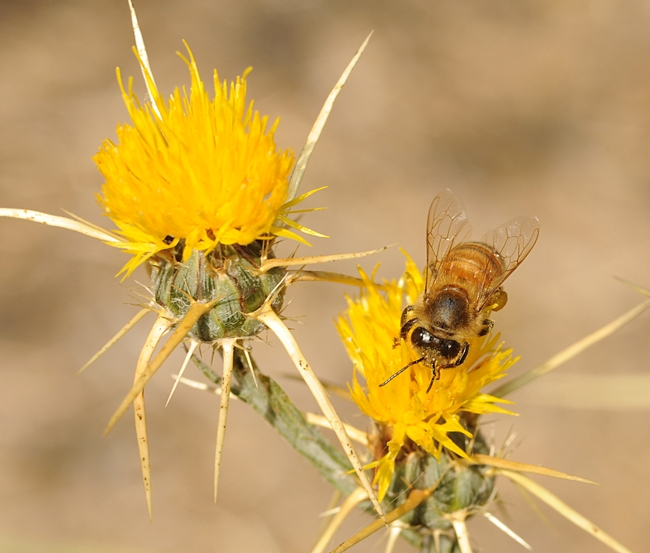It's a perfect example of "the bad, the ugly and the good."
In that order. Not "the good, the bad and the ugly."
The yellow starthistle (Centaurea solstitialis) is the kind of obnoxious weed you wish would go away forever. It's highly invasive, thorny as a pincushion jammed with needles, and poisons horses.
It's also a non-native. From Eurasia, it's been in the Americas for about 161 years. Today it infests more than 14 million acres in California alone.
But this stickery plant makes fantastic honey. If you've ever tasted starthistle honey, you probably won't want another variety.
Large-scale migratory beekeeper John Miller of Gackle, N.D., who trucks his bees all over the country, including California, likes honey. Which honey does he like the best? Starthistle. He describes starthistle honey as like "a wall of sunshine."
You can read about him and his love of honey in Hannah Nordhaus' newly published book, The Beekeepers' Lament: How One Man and Half a Billion Honey Bees Help Feed America.
"The best honey plants aren't always the best plants for other human purposes," Nordhaus writes. She quotes Miller as saying that the starthistle is a "terrible, noxious, invasive nasty weed."
He's right.
"It is so hated by farmers that in California, state agriculture officials have released a wasp that lays eggs that kill the bloom, so starthistle honey guys just don't get the production they used to," Nordhaus points out.
"Botanists," she adds, "suspect that the weed hitchhiked to the New World with alfalfa seeds from Spain, and it can now be found all over the West..."
At the annual UC Davis Picnic Day, starthistle honey is a favorite of honey samplers. Every year Extension apiculturist Eric Mussen of the UC Davis Department of Entomology sets up a table in the Briggs Hall courtyard and invites folks to sample about six varieties of honey.
"Omigosh this is good!" they exclaim after tasting starthistle honey.
It's good, but the plant it came from is...totally undesirable.
Attached Images:

Honey bee on a yellow starthistle flower on Bee Biology Road at UC Davis. (Photo by Kathy Keatley Garvey)

Honey bee gathers both nectar and pollen from yellow starthistle. (Photo by Kathy Keatley Garvey)

Yellow starthistle is a good plant for bees, but not for people. (Photo by Kathy Keatley Garvey)